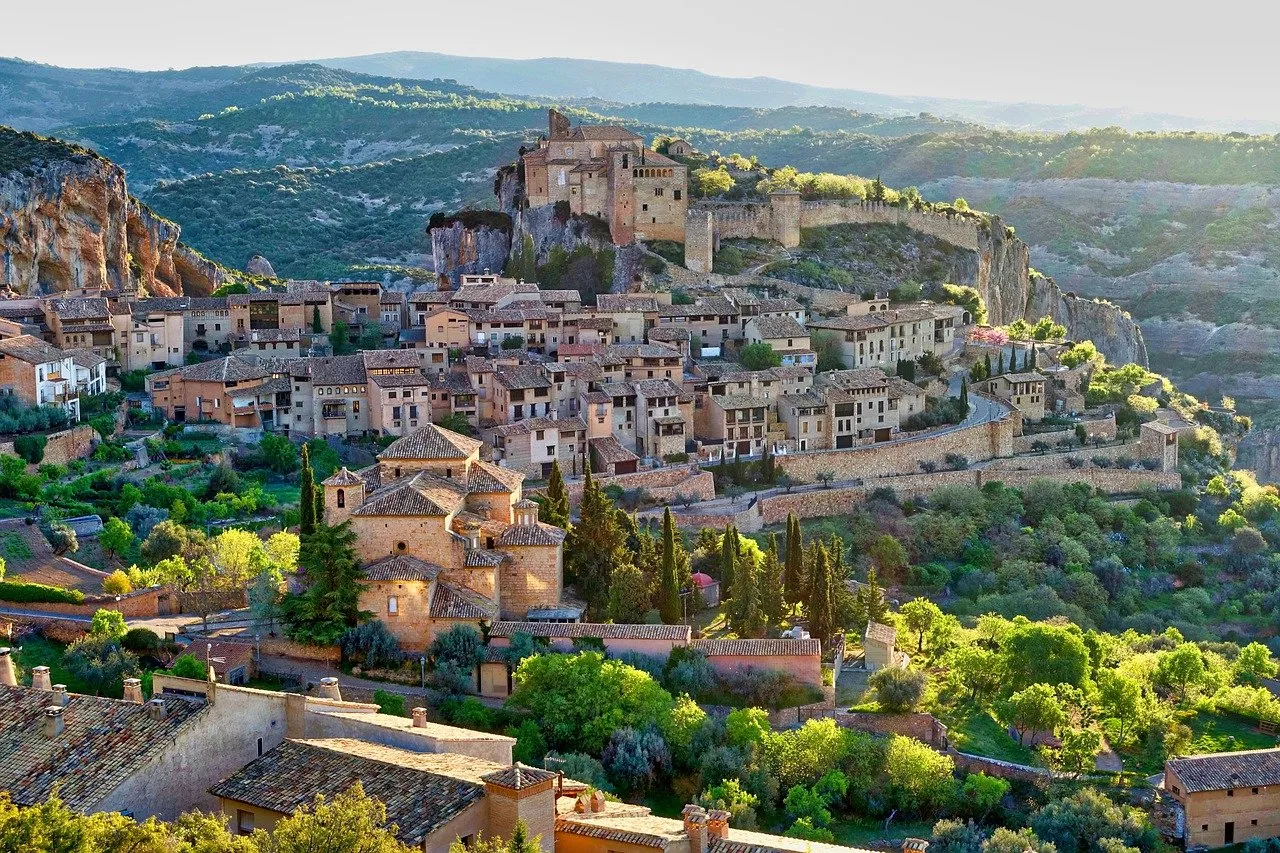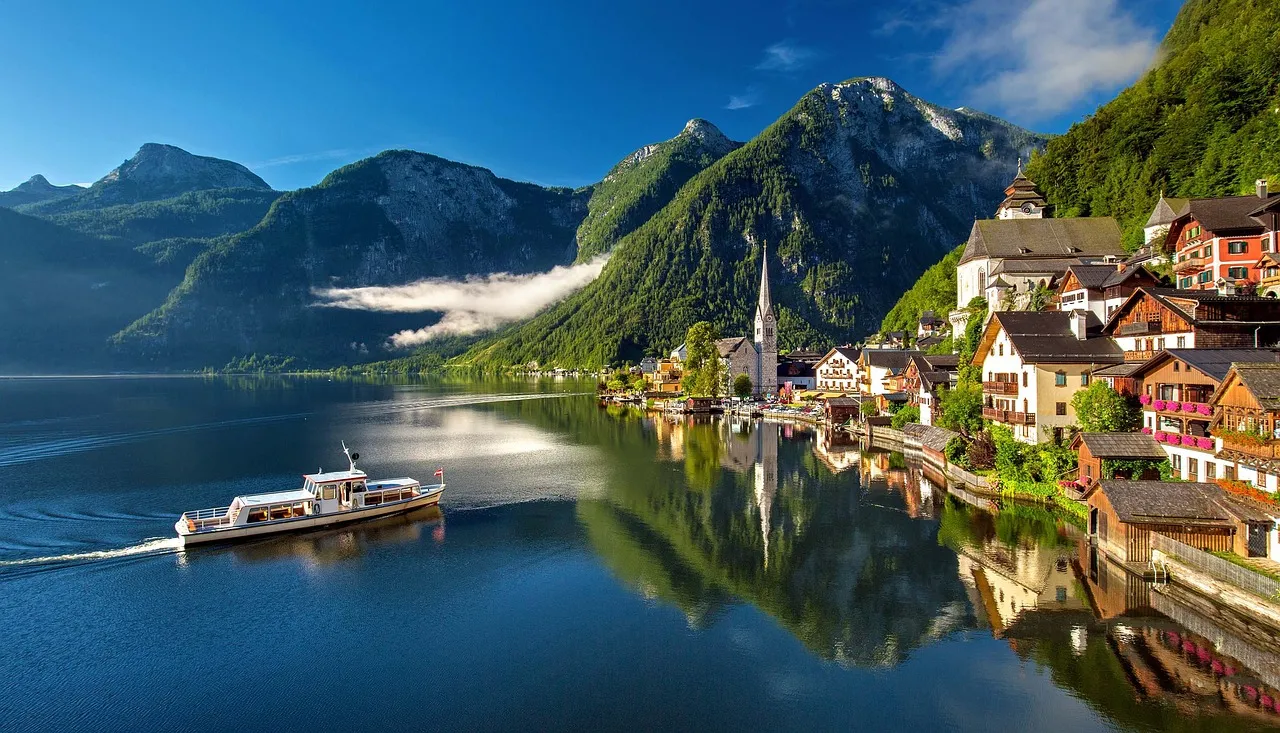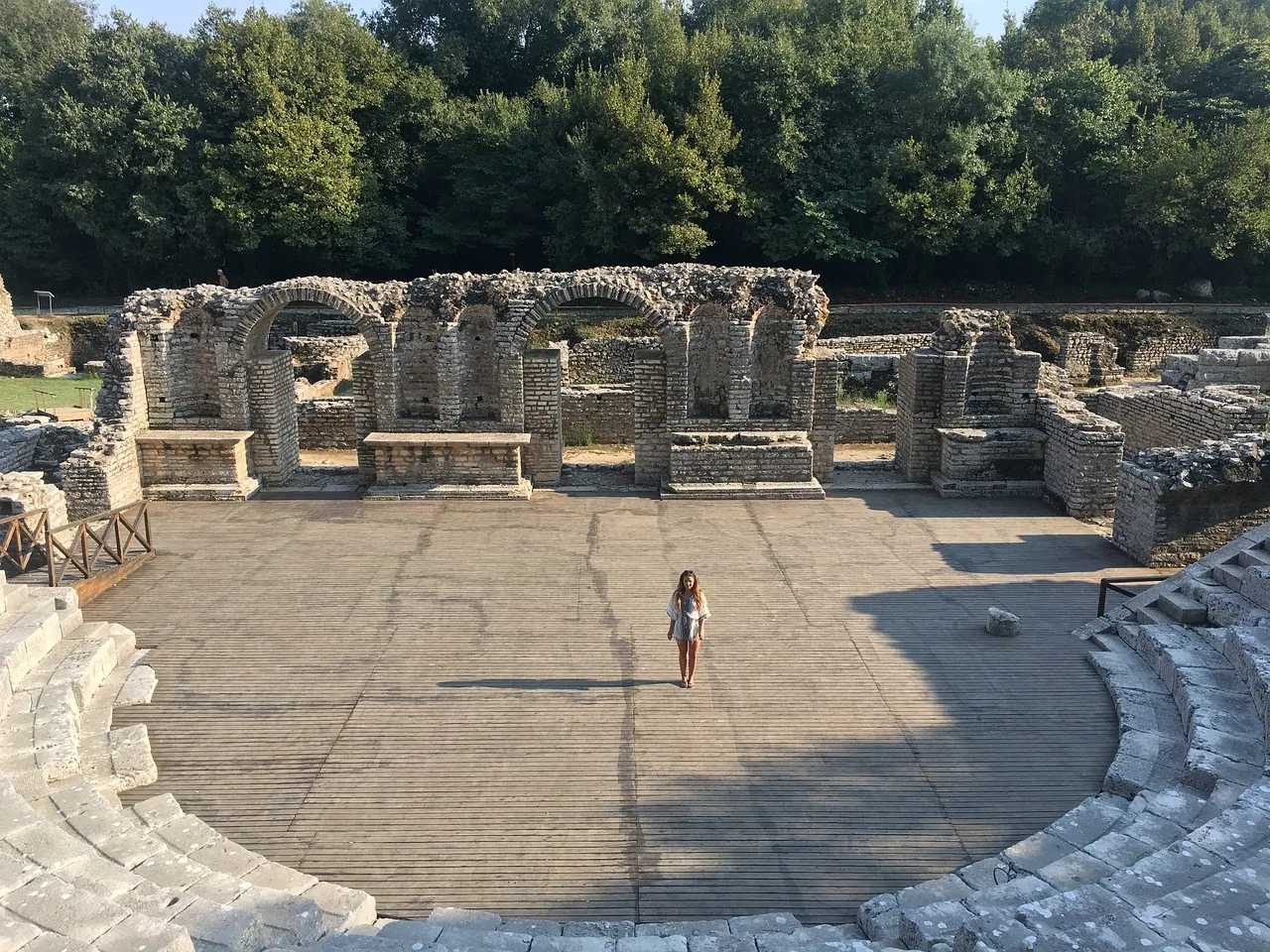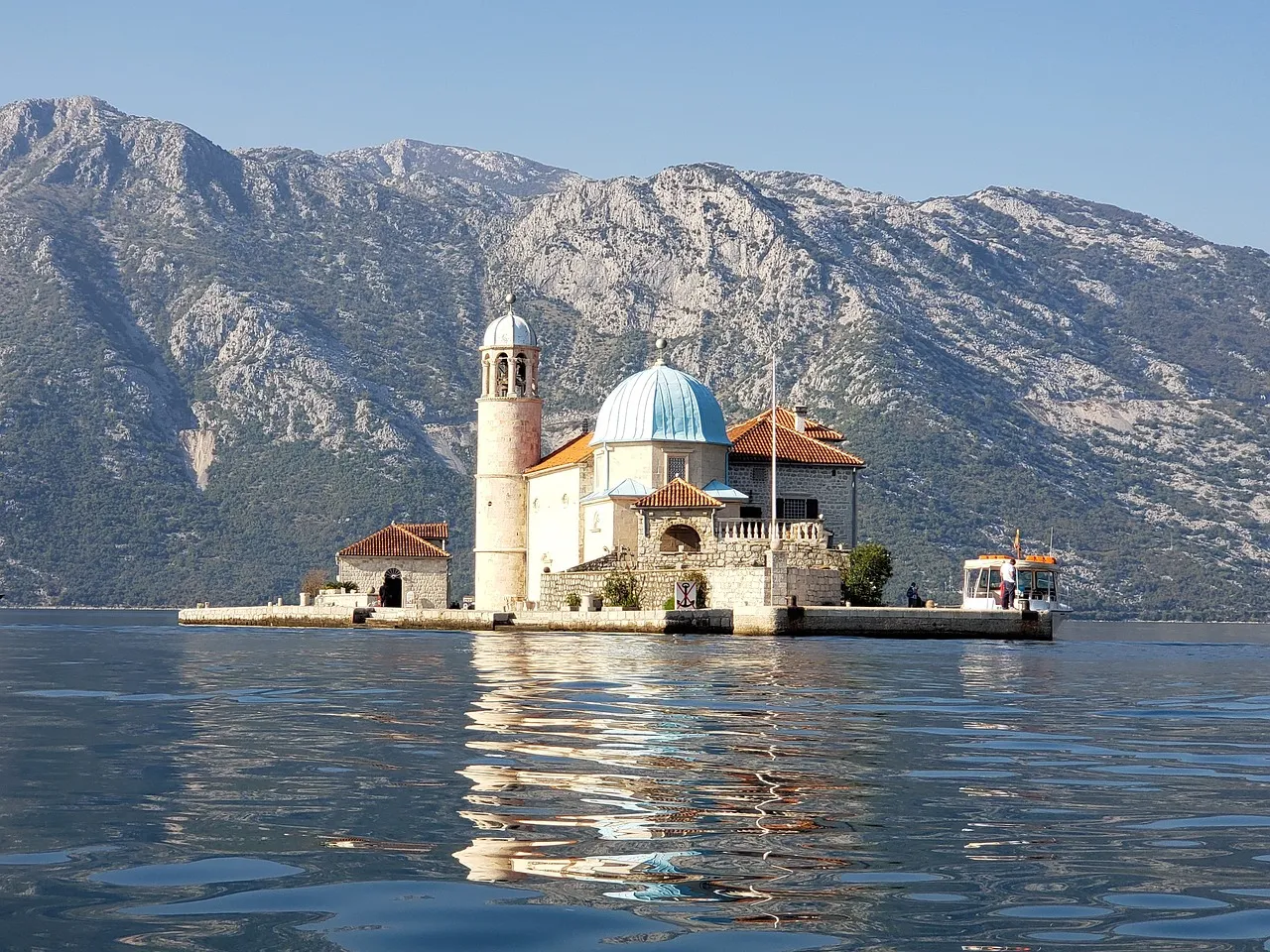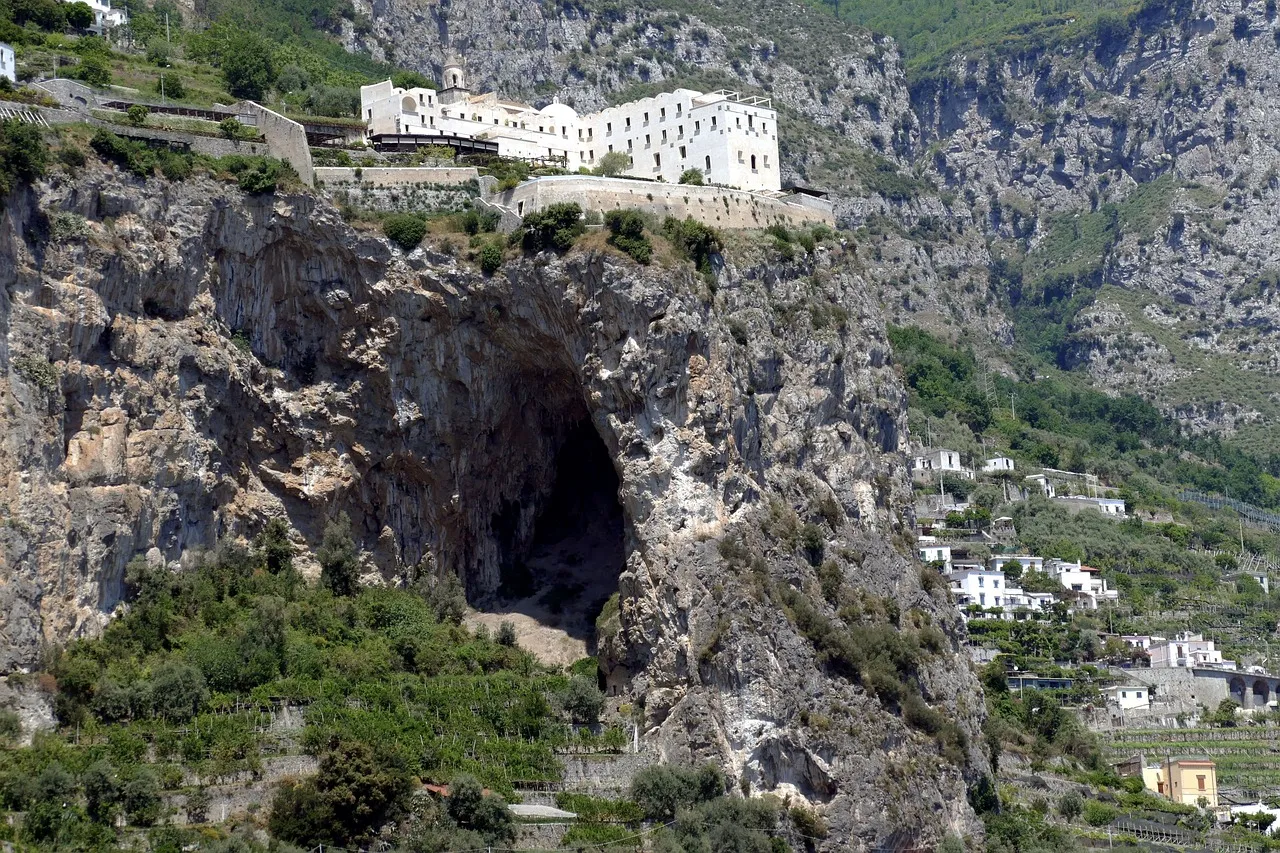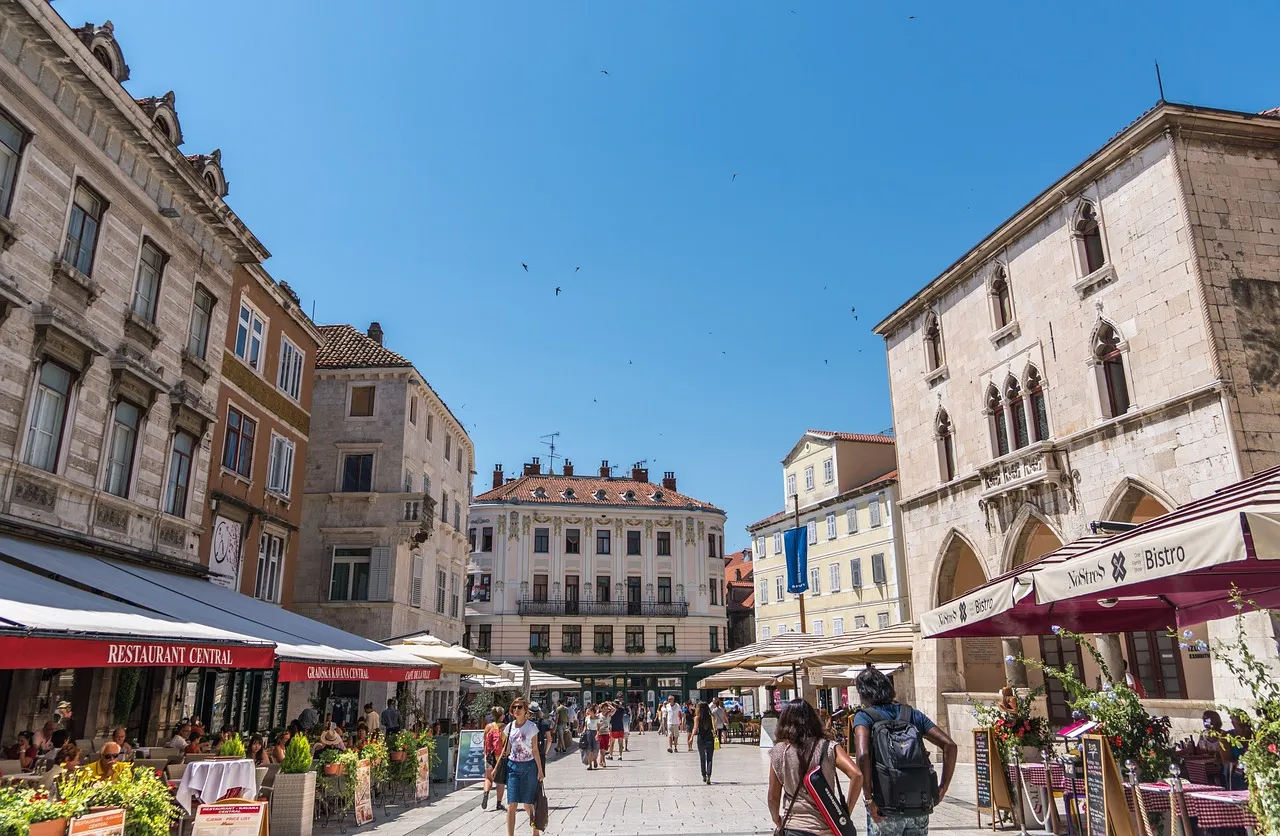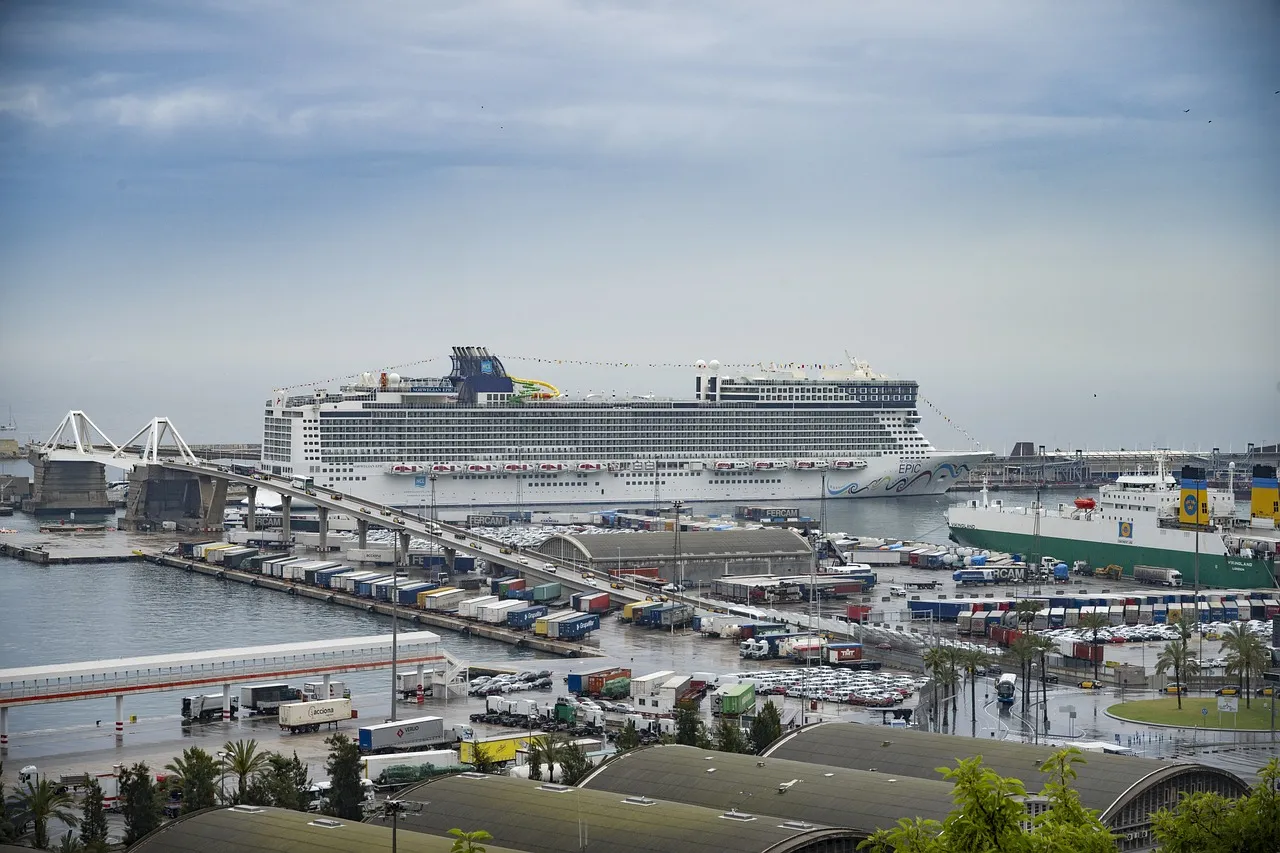The Mediterranean region, often referred to as the cradle of civilization, is a treasure trove of history, culture, and natural beauty. Spanning multiple countries and showcasing a rich tapestry of landscapes, the Mediterranean offers an array of marvels waiting to be explored. In this journey, we will delve into the wonders that make the Mediterranean a captivating destination, from ancient ruins to azure waters and vibrant markets.
Mediterranean Marvels
1. Historical Riches: Exploring Ancient Ruins
One cannot speak of Mediterranean marvels without acknowledging its historical wealth. The region is home to iconic ancient ruins that tell stories of civilizations long past. From the Acropolis in Athens to the Roman Forum in Rome and the ancient city of Ephesus in Turkey, each site is a testament to the ingenuity and architectural prowess of ancient cultures.
2. Coastal Gems: Azure Waters and Sandy Shores
The Mediterranean’s coastline is adorned with some of the world’s most beautiful beaches. The Amalfi Coast in Italy boasts dramatic cliffs and crystal-clear waters, while the beaches of Mykonos in Greece offer golden sands against a backdrop of charming architecture. Whether you seek tranquility or vibrant beach parties, the Mediterranean’s coastal gems cater to all preferences.
3. Culinary Delights: A Gastronomic Odyssey
Mediterranean cuisine is celebrated globally for its fresh ingredients, bold flavors, and health benefits. Indulge in Greek moussaka, Spanish paella, or Italian pasta while savoring locally produced olive oil and wines. From bustling markets to family-run trattorias, the Mediterranean invites you on a culinary odyssey that reflects the diversity and richness of its cultures.
4. Island Paradises: Escapes of Serenity
The Mediterranean is dotted with enchanting islands, each with its unique charm. Santorini in Greece, with its whitewashed buildings and sunsets over the caldera, is a romantic haven. Sardinia in Italy offers pristine beaches and rugged landscapes, while Cyprus combines ancient history with vibrant modern life. These islands are perfect escapes for those seeking serenity and natural beauty.
5. Cultural Festivals: Celebrating Traditions
Throughout the year, the Mediterranean hosts a plethora of cultural festivals that showcase the region’s traditions, music, and arts. The Feria de Abril in Seville, Spain, is a vibrant celebration of flamenco and Andalusian culture, while the Carnival of Venice, Italy, is a mesmerizing display of elaborate masks and costumes. Participating in these festivals offers a unique insight into the heart of Mediterranean traditions.
6. Architectural Marvels: Old Towns and Modern Wonders
Mediterranean cities boast a blend of old-world charm and modern sophistication. The walled city of Dubrovnik in Croatia, with its well-preserved medieval architecture, contrasts with the futuristic City of Arts and Sciences in Valencia, Spain. Exploring these architectural marvels allows travelers to witness the evolution of design and urban planning across the ages.
7. Nature’s Grandeur: National Parks and Reserves
Beyond bustling cities and ancient ruins, the Mediterranean is home to diverse natural landscapes. The Plitvice Lakes National Park in Croatia features cascading waterfalls and emerald-green lakes, while the Calanques National Park in France offers dramatic limestone cliffs overlooking the Mediterranean Sea. These protected areas showcase the region’s commitment to preserving its natural wonders.
8. Open-Air Markets: Bazaars of Tradition
Wandering through the open-air markets of the Mediterranean is a sensory delight. The Grand Bazaar in Istanbul, Turkey, is a labyrinth of spices, textiles, and trinkets, while the Mercado Central in Valencia, Spain, is a feast for the senses with its vibrant displays of fresh produce and seafood. These markets are not just places to shop but vibrant hubs of local life and culture.
9. Sailing Adventures: Navigating Azure Horizons
The Mediterranean’s azure waters invite sailing enthusiasts to embark on unforgettable journeys. From the Greek Islands to the Dalmatian Coast, the region offers a plethora of sailing adventures. Explore hidden coves, discover secluded beaches, and witness breathtaking sunsets while sailing along the Mediterranean’s picturesque coastlines.
10. Wellness Retreats: Revitalizing Body and Mind
Mediterranean destinations are increasingly becoming havens for wellness retreats. Picture yourself practicing yoga on the cliffs of Ibiza, indulging in spa treatments overlooking the Aegean Sea, or participating in holistic wellness programs in the hills of Tuscany. These retreats allow travelers to rejuvenate amidst the natural beauty and tranquility of the Mediterranean.
The Mediterranean is a region where every step is a journey through time, culture, and natural splendor. Whether you are exploring ancient ruins, indulging in culinary delights, or sailing along azure waters, the Mediterranean never fails to captivate with its diverse marvels. Embark on a voyage through this enchanting region, and you will discover why the Mediterranean is a timeless source of inspiration and fascination for travelers around the world.
UNESCO World Heritage sites in the Mediterranean
The Mediterranean region, with its rich tapestry of cultures and civilizations, is home to an abundance of UNESCO World Heritage Sites. These sites are not merely historical landmarks; they are windows into the collective heritage of humanity. In this exploration, we will journey through the Mediterranean to uncover the significance and beauty of these esteemed UNESCO-designated treasures.
1. Acropolis of Athens, Greece: Where Gods and Mortals Converge
Perched atop a rocky hill, the Acropolis of Athens stands as an enduring symbol of classical Greece. Home to iconic structures such as the Parthenon and the Temple of Athena Nike, this archaeological marvel encapsulates the zenith of ancient Greek architecture and the birthplace of democracy.
2. Historic Areas of Istanbul, Turkey: A Crossroads of Cultures
The Historic Areas of Istanbul, straddling Europe and Asia, narrate the tale of successive empires. From the majestic Hagia Sophia and Topkapi Palace to the intricate design of the Blue Mosque, Istanbul’s UNESCO-listed sites are a testament to the city’s role as a bridge between civilizations.
3. Pompeii and Herculaneum, Italy: Preserving Time in Volcanic Ash
Frozen in time by the catastrophic eruption of Mount Vesuvius in 79 AD, Pompeii and Herculaneum offer an unparalleled glimpse into daily life during the Roman Empire. The remarkably preserved ruins, including homes, theaters, and public baths, allow visitors to step into the world of ancient Romans.
4. Cinque Terre, Italy: Where Land and Sea Embrace
The Cinque Terre, a collection of five picturesque fishing villages perched on the rugged Italian Riviera, is a UNESCO site celebrated for its harmonious blend of natural and cultural elements. The colorful houses, terraced vineyards, and stunning coastal landscapes create a breathtaking panorama.
5. Marrakech, Morocco: A Jewel of Islamic Architecture
Marrakech, a UNESCO-designated city in Morocco, is a captivating blend of historic architecture and vibrant cultural traditions. From the intricate details of the Koutoubia Mosque to the bustling marketplaces of the Medina, Marrakech immerses visitors in the enchanting allure of Moroccan heritage.
6. Archaeological Site of Troy, Turkey: In Search of Homer’s Epic
The Archaeological Site of Troy, immortalized in Homer’s Iliad, is a site of both historical and literary significance. Unearthed by archaeologist Heinrich Schliemann, the ruins reveal the layers of ancient Troy and provide a tangible connection to the myths and legends of antiquity.
7. Historical Monuments of Mtskheta, Georgia: Cradle of Georgian Christianity
Nestled along the banks of the Kura River, Mtskheta is a UNESCO-listed site that reflects the beginnings of Christianity in Georgia. The Svetitskhoveli Cathedral and Jvari Monastery are landmarks that stand as testaments to the country’s spiritual and architectural heritage.
8. Archaeological Site of Delphi, Greece: The Oracle’s Sanctuary
Set against a backdrop of breathtaking mountain scenery, the Archaeological Site of Delphi was once considered the center of the world in ancient Greek religion. The Temple of Apollo, the Theater, and the Sanctuary of Athena Pronaia are among the well-preserved structures that transport visitors to a time of oracles and divine wisdom.
9. Historic Centre of Rome, Italy: Eternal City’s Timeless Grandeur
The Historic Centre of Rome, a UNESCO World Heritage Site, is a living testament to the evolution of the Roman Empire. From the Colosseum, an iconic symbol of ancient Rome, to the Roman Forum and Pantheon, every cobblestone in the historic heart of Rome tells a story of millennia.
10. Medina of Tunis, Tunisia: A Labyrinth of Islamic Architecture
The Medina of Tunis, a UNESCO-protected site, is a labyrinthine maze of narrow streets, bustling souks, and historic mosques. This ancient city quarter is a showcase of Islamic architecture and urban planning, providing a glimpse into the rich cultural heritage of Tunisia.
The UNESCO World Heritage Sites in the Mediterranean are not merely remnants of the past; they are living narratives that connect us to the roots of human civilization. Each site tells a unique story, whether it’s the grandeur of classical Greece, the splendors of the Roman Empire, or the cultural fusion of Istanbul. Exploring these UNESCO treasures is a journey through time, an immersion into the diverse and captivating history of the Mediterranean region.
Mediterranean historical landmarks
The Mediterranean region, often referred to as the cradle of civilization, is a living museum of history. Its landscapes are adorned with historical landmarks that bear witness to the rise and fall of empires, the exchange of cultures, and the evolution of human civilization. In this exploration, we will embark on a journey through time, unraveling the stories behind some of the most captivating historical landmarks that grace the Mediterranean.
1. The Colosseum, Rome, Italy: An Icon of Ancient Spectacle
Standing as an eternal symbol of Rome’s grandeur, the Colosseum is an architectural marvel that has withstood the test of time. Built in the 1st century AD, this amphitheater once hosted gladiator contests, animal hunts, and theatrical performances. The Colosseum’s iconic arches and majestic structure continue to captivate visitors, offering a glimpse into the heart of ancient Roman entertainment.
2. The Acropolis, Athens, Greece: A Testament to Greek Glory
Perched high above Athens, the Acropolis is a citadel of classical Greek architecture. Dominated by the Parthenon, a temple dedicated to the goddess Athena, this UNESCO World Heritage Site is a testament to the cultural and intellectual achievements of ancient Greece. The Propylaea, Erechtheion, and Temple of Athena Nike complete the ensemble, creating an awe-inspiring panorama of ancient splendor.
3. Alhambra, Granada, Spain: Moorish Majesty in Andalusia
Nestled against the backdrop of the Sierra Nevada mountains, the Alhambra is a masterpiece of Moorish architecture. This palace and fortress complex dates back to the 13th century and showcases intricate Islamic artistry, lush gardens, and stunning views of Granada. The Alhambra serves as a testament to the cultural exchange between the Muslim and Christian worlds during the Middle Ages.
4. Ephesus, Izmir, Turkey: The Ancient City of Artemis
Once a thriving Greek and Roman city, Ephesus now stands as an archaeological site that transports visitors to a bygone era. The Library of Celsus, the Temple of Artemis, and the Great Theatre are among the well-preserved structures that reflect the grandeur of Ephesus during its heyday. Walking through the marble streets, one can almost hear the echoes of ancient life.
5. Dubrovnik City Walls, Croatia: Sentinels of a Maritime Republic
Encircling the historic city of Dubrovnik, the city walls are a testament to the maritime republic’s fortification against external threats. Built between the 12th and 17th centuries, the walls offer panoramic views of the Adriatic Sea and the red-roofed city below. Walking the walls is a journey through Dubrovnik’s maritime history and the resilience of a city that has faced numerous challenges.
6. Meteora, Thessaly, Greece: Monasteries in the Sky
Perched atop towering sandstone pillars, the monasteries of Meteora are a unique blend of nature and human ingenuity. Constructed by monks seeking solitude in the 14th century, these monastic complexes provide breathtaking views of the Pindus Mountains. The monasteries are not only architectural marvels but also represent the spiritual quest for transcendence.
7. Carthage, Tunis, Tunisia: Echoes of an Ancient Empire
Once a powerful Phoenician city and later a Roman stronghold, Carthage’s ruins are scattered along the Mediterranean coast of Tunisia. The Antonine Baths, the Punic Ports, and the Carthage National Museum collectively narrate the city’s rich history. Exploring Carthage is a journey into the conflicts, triumphs, and ultimate demise of an ancient empire.
8. The Citadel of Qaitbay, Alexandria, Egypt: Guardian of the Mediterranean Harbor
Standing proudly on the site of the ancient Pharos Lighthouse, one of the Seven Wonders of the Ancient World, the Citadel of Qaitbay overlooks Alexandria’s harbor. Built in the 15th century by Sultan Qaitbay, this fortress served as a defensive bastion against maritime invasions. The citadel’s strategic location and historical significance make it a must-visit landmark in Alexandria.
9. Diocletian’s Palace, Split, Croatia: A Roman Emperor’s Retreat
Diocletian’s Palace, nestled in the heart of Split, is a well-preserved Roman imperial residence that dates back to the 4th century. The palace, with its impressive Peristyle square, mausoleum, and ancient basements, is a living testament to the architectural prowess of the Roman Empire. Today, it stands as a vibrant part of Split’s urban fabric.
10. The Pyramids of Giza, Egypt: Eternal Guardians of Pharaonic Legacy
The Pyramids of Giza, including the Great Pyramid of Khufu, the Pyramid of Khafre, and the Pyramid of Menkaure, are iconic symbols of ancient Egypt’s architectural and engineering achievements. Standing as eternal guardians on the Giza Plateau, these colossal structures have captivated the world for millennia, leaving an indelible mark on the landscape of human history.
Mediterranean historical landmarks are more than just remnants of the past; they are portals to different epochs, witnesses to the ebb and flow of civilizations. From the grandeur of Rome’s Colosseum to the mystical aura of Greece’s Meteora, each landmark invites us to explore the narratives etched into the stones and landscapes of the Mediterranean, reminding us that the footprints of time are still visible for those willing to embark on the journey.
Hidden gems in the Mediterranean
While popular tourist destinations in the Mediterranean shine bright, there’s a world of hidden gems waiting to be discovered by those seeking a more intimate and authentic experience. These lesser-known spots boast unique charm, rich history, and stunning landscapes. In this exploration, we’ll uncover some of the hidden gems in the Mediterranean, inviting you to venture off the beaten path and create memories that linger like the sea breeze.
1. Rovinj, Croatia: Enchanting Istrian Peninsula
Tucked away on Croatia’s Istrian Peninsula, Rovinj is a hidden gem with its winding cobblestone streets, pastel-colored houses, and a stunning harbor. The Church of St. Euphemia, standing tall on a hill, offers panoramic views of the Adriatic. Rovinj’s authenticity and romantic atmosphere make it a perfect retreat for those seeking tranquility away from the bustling crowds.
2. Folegandros, Greece: A Cycladic Haven
Amidst the Cyclades, Folegandros stands as a serene island gem. With its traditional whitewashed architecture and cliffside views, Folegandros exudes charm. Explore the medieval Kastro, stroll through the charming Chora, and discover pristine beaches like Agali. Folegandros offers an escape into the authentic essence of Greek island life.
3. Cadaqués, Spain: Dali’s Coastal Retreat
Nestled on the Costa Brava, Cadaqués is a picturesque village that once inspired Salvador Dalí. The whitewashed houses, narrow streets, and crystal-clear waters of the Mediterranean create a surreal setting. Dali’s former house in nearby Portlligat is now a museum, providing insight into the artist’s creative world. Cadaqués is a haven for art enthusiasts seeking inspiration in a tranquil seaside setting.
4. Kotor, Montenegro: Bay of Endless Surprises
Hidden within the Bay of Kotor, this Montenegrin gem is surrounded by dramatic limestone cliffs. The old town, a UNESCO World Heritage Site, boasts medieval architecture and charming squares. Climb the city walls for breathtaking views or explore the hidden Church of Our Lady of Remedy. Kotor is a blend of history, natural beauty, and unexpected discoveries.
5. Procida, Italy: A Colorful Escape Near Naples
While Capri and Ischia may steal the spotlight, Procida quietly awaits discerning travelers near Naples. The pastel-hued houses, vibrant marinas, and narrow streets create a postcard-worthy scene. Visit the medieval Terra Murata, enjoy a leisurely day at Marina Corricella, and savor the authenticity of a less-explored Italian gem.
6. Bozcaada, Turkey: Wine and Tranquility
An island in the Aegean Sea, Bozcaada is a hidden treasure known for its vineyards, historic windmills, and pristine beaches. The old town, encircled by medieval walls, invites exploration of its cobblestone streets and Ottoman-era architecture. Bozcaada’s wineries offer a taste of the island’s local varietals, making it a delightful retreat for wine enthusiasts.
7. Gozo, Malta: Island of Calm
In the shadow of its more famous sister island, Malta, Gozo remains a tranquil haven. Known for its rugged landscapes, historic temples, and vibrant fishing villages, Gozo offers a slower pace of life. Explore the Ġgantija temples, snorkel in the Blue Hole, or simply enjoy the unhurried charm of this hidden Mediterranean gem.
8. Datça Peninsula, Turkey: Nature’s Tapestry
For those seeking unspoiled natural beauty, the Datça Peninsula in Turkey is a revelation. A haven of pine-covered hills, crystal-clear waters, and secluded coves, Datça is a paradise for nature lovers. Visit ancient Knidos, relax on the pristine beaches, and savor local flavors in charming villages. Datça offers a retreat into the embrace of untouched Mediterranean landscapes.
9. Hydra, Greece: Timeless Elegance
A short ferry ride from Athens, Hydra feels like a step back in time. With no motorized vehicles allowed, the island relies on donkeys for transportation. The preserved architecture, stone-paved alleys, and the historic port create an atmosphere of timeless elegance. Hydra’s artistic community, crystal-clear waters, and peaceful ambiance make it a hidden gem in the Saronic Gulf.
10. Alberobello, Italy: Trulli Magic
Nestled in the Puglia region, Alberobello is a UNESCO World Heritage Site renowned for its unique trulli houses. These cone-shaped structures with whitewashed walls create a fairytale-like setting. Wander through the Rione Monti district, visit the Trullo Sovrano, and immerse yourself in the magic of Alberobello, a hidden gem in the heart of Italy’s south.
The Mediterranean’s hidden gems are scattered like treasures waiting to be discovered. Whether you’re drawn to the secluded beaches of Bozcaada, the artistic allure of Cadaqués, or the historic charm of Kotor, these lesser-known destinations offer a chance to escape the ordinary and embrace the authentic beauty of the Mediterranean. Unveil these hidden gems, and let their unique stories become part of your own travel narrative.
Mediterranean culture and traditions
The Mediterranean, a region kissed by the sun and cradled by azure waters, is not just a geographic entity but a mosaic of diverse cultures and rich traditions. From the sun-soaked islands of Greece to the bustling markets of Morocco, the Mediterranean’s cultural tapestry weaves a story of ancient civilizations, vibrant customs, and time-honored traditions. In this exploration, we delve into the essence of Mediterranean culture and traditions, inviting you to savor the flavors, rhythms, and rituals that define this captivating region.
1. Mediterranean Cuisine: A Feast for the Senses
At the heart of Mediterranean culture is its renowned cuisine, a celebration of fresh, local ingredients and bold flavors. From the olive groves of Greece to the vineyards of Italy, the Mediterranean diet is a culinary journey that promotes health and indulgence. Indulge in the simplicity of Greek salads, the robustness of Italian pasta, and the aromatic spices of Moroccan tagines. Mediterranean cuisine isn’t just a meal; it’s a shared experience, a moment to savor life’s delicious offerings.
2. Traditional Festivals: Dancing to the Rhythms of Celebration
Mediterranean societies are deeply rooted in tradition, and festivals play a pivotal role in preserving cultural heritage. From the exuberant Carnival of Venice, where masks and costumes flood the streets, to the vibrant Feria de Abril in Seville, where flamenco rhythms echo through the air, these festivals are a kaleidoscope of colors, music, and dance. Each celebration is a chance to connect with the pulse of Mediterranean joy and express the region’s zest for life.
3. Mediterranean Architecture: Whispers of Ancient Grandeur
Mediterranean architecture is a testament to the region’s rich history and the convergence of various civilizations. Whitewashed villages in Greece, rustic stone houses in Croatia, and intricate Moorish designs in Spain tell stories of ancient conquerors and cultural exchange. Explore the narrow streets of the Medina in Tunis or wander through the Alhambra in Granada to witness the architectural treasures that stand as guardians of Mediterranean heritage.
4. Traditional Music and Dance: Echoes of Folklore
Music and dance are integral to Mediterranean culture, serving as expressions of joy, sorrow, and everyday life. From the passionate flamenco in Spain to the lively tarantella in Italy, these traditional art forms are deeply intertwined with local identities. Join a Greek dance in a taverna or lose yourself in the hypnotic sounds of Moroccan Gnawa music – the Mediterranean’s melodies are an invitation to connect with the soul of each community.
5. Artisan Crafts and Markets: Handcrafted Legacies
Mediterranean markets are a kaleidoscope of colors and textures, where artisans showcase their craft with pride. From the intricate ceramics of Caltagirone in Sicily to the vibrant textiles of the Grand Bazaar in Istanbul, these markets are a treasure trove of handmade creations. Take a stroll through the markets, interact with local artisans, and bring home a piece of Mediterranean craftsmanship that tells a story of tradition and skill.
6. Coffee Culture: Sipping Stories in a Cup
Coffee isn’t just a beverage in the Mediterranean; it’s a ritual, a moment of connection. Whether you’re sipping strong Greek coffee in Athens or enjoying a leisurely café con leche in Barcelona, the act of sharing coffee is a social glue that binds communities. Embrace the slow pace, engage in conversation, and let the aroma of freshly brewed coffee weave its magic.
7. Language and Literature: Words as Time Travelers
The Mediterranean is a linguistic kaleidoscope, with each country boasting its own language and dialects. From the melodic sounds of Italian to the rhythmic Arabic script, language is a vessel for preserving stories and traditions. Dive into Mediterranean literature, where the works of Nobel laureates like Naguib Mahfouz and Gabriel Garcia Marquez provide windows into the complexities of the region’s societies.
8. Religious Celebrations: Devotion and Reverence
Religion plays a significant role in Mediterranean culture, with various faiths coexisting and influencing traditions. Witness the fervor of Holy Week in Spain, where processions fill the streets with religious icons, or experience the spiritual ambiance of Ramadan in Morocco. These religious celebrations are more than rituals; they are expressions of faith and communal identity.
9. Island Traditions: Seafaring Legacies
The Mediterranean’s islands harbor unique traditions shaped by the sea. From the traditional boat races of Sardinia to the maritime songs of the Aegean islands, these seafaring legacies reflect the deep connection between island communities and the vast, blue expanse that surrounds them. Explore the island way of life, where fishing techniques, boat-building skills, and maritime folklore are passed down through generations.
10. Siesta and Slow Living: Savoring the Moment
Embedded in the Mediterranean lifestyle is the concept of “la dolce far niente” or “the sweetness of doing nothing.” Embrace the art of siesta, where afternoons are dedicated to rest, reflection, and enjoying the simple pleasures of life. Slow down, immerse yourself in the local rhythm, and savor the unhurried beauty of Mediterranean living.
Mediterranean culture and traditions are a mosaic of diverse influences, each contributing to the region’s timeless allure. Whether you’re savoring a bowl of Greek olives, dancing to the beats of a Spanish flamenco, or exploring ancient marketplaces, the Mediterranean invites you to be a part of its living tapestry. Embrace the culture, connect with traditions, and let the Mediterranean spirit captivate your senses.
Cruises in the Mediterranean
Embarking on a Mediterranean cruise is a voyage into a world of sun-drenched landscapes, ancient wonders, and captivating cultures. The azure waters of the Mediterranean Sea cradle a tapestry of destinations, each offering a unique blend of history, gastronomy, and natural beauty. In this guide, we’ll navigate the treasures of the Mediterranean, exploring the enchanting ports of call, the luxury of life at sea, and the immersive experiences that make Mediterranean cruises a dream for every traveler.
1. Embarkation Ports: Gateway to the Mediterranean Marvels
Mediterranean cruises typically set sail from iconic ports, allowing passengers to explore vibrant cities before venturing into the open sea. Barcelona, Rome, and Athens are popular embarkation points, offering a prelude to the cruise with their rich history and cultural landmarks. Spend a day or two exploring these embarkation cities to add an extra layer of discovery to your Mediterranean journey.
2. Destinations on the Itinerary: A Symphony of Diverse Experiences
One of the highlights of Mediterranean cruises is the array of destinations on the itinerary. From the historical wonders of Rome and Athens to the charming coastal villages of the Greek Isles and the French Riviera, each port of call brings a new chapter to your cruise adventure. Explore the ancient ruins of Ephesus, savor the culinary delights of Barcelona, and bask in the sun-drenched beaches of the Amalfi Coast.
3. Cruise Lines and Ships: Luxury Afloat
Mediterranean cruises offer a range of options to suit different preferences and budgets. Luxury cruise lines like Oceania, Regent Seven Seas, and Seabourn provide an intimate and upscale experience, often with smaller ships that can access ports not accessible to larger vessels. Mainstream cruise lines such as Royal Caribbean and MSC Cruises also offer fantastic Mediterranean itineraries, providing a diverse range of entertainment, dining, and activities for passengers.
4. Onboard Experiences: Beyond the Horizon
Life onboard a Mediterranean cruise is an experience in itself. From gourmet dining to Broadway-style shows, spas, and pools with panoramic views, cruise ships are floating resorts that cater to every taste. Indulge in a culinary journey with themed restaurants, unwind with a spa day at sea, or simply enjoy the sunset from your private balcony. The onboard experience is designed to complement the richness of the destinations visited.
5. Shore Excursions: Immersive Adventures
Shore excursions are the heart of a Mediterranean cruise, allowing passengers to delve into the culture, history, and natural beauty of each destination. Explore the Acropolis in Athens, wander through the historic streets of Dubrovnik, or take a boat ride along the stunning Amalfi Coast. Whether you’re a history buff, a foodie, or a nature enthusiast, there’s a shore excursion tailored to your interests.
6. Culinary Delights: A Gastronomic Journey
Mediterranean cruises are a culinary delight, offering passengers the chance to savor the diverse flavors of the region. From tapas in Spain to fresh seafood in Greece and pasta in Italy, each meal is an opportunity to indulge in local specialties. Many cruise lines collaborate with renowned chefs to curate unique dining experiences, ensuring that your taste buds embark on a journey as unforgettable as the destinations.
7. Seasonal Considerations: Choosing the Right Time to Cruise
The Mediterranean experiences distinct seasons, and the timing of your cruise can significantly impact your experience. Summer, from June to August, is peak season with warm temperatures and bustling crowds. Spring (April to June) and fall (September to October) offer milder weather and a more relaxed atmosphere. Winter cruises are less common but provide a unique perspective, with fewer tourists and a quieter ambiance in the ports.
8. Cruise Tips and Tricks: Navigating the Waters
To make the most of your Mediterranean cruise, consider a few tips and tricks. Pack comfortable shoes for exploring cobblestone streets, bring a power strip to charge your devices, and take advantage of onboard lectures to enhance your understanding of the destinations. Additionally, consider purchasing a beverage package if you enjoy indulging in drinks while onboard.
9. Cultural Etiquette: Respecting Local Traditions
While enjoying the diverse cultures of the Mediterranean, it’s essential to be aware of and respect local customs and traditions. In some conservative areas, modest dress may be required when visiting religious sites. Learning a few basic phrases in the local languages, such as “hello” and “thank you,” can go a long way in creating positive interactions with locals.
10. Sustainability in Cruising: Cruising Responsibly
As the travel industry places an increasing emphasis on sustainability, many cruise lines are taking steps to reduce their environmental impact. Choose cruise lines that prioritize sustainability, such as those investing in eco-friendly technologies, minimizing single-use plastics, and supporting local communities through responsible tourism practices.
Embarking on a Mediterranean cruise is a voyage of a lifetime, where every port of call unfolds a new chapter in the story of this enchanting region. From the luxurious amenities onboard to the immersive experiences on land, a Mediterranean cruise is a harmonious blend of relaxation and exploration. So, set sail, embrace the sea breeze, and let the wonders of the Mediterranean unfold before you on this maritime adventure.
